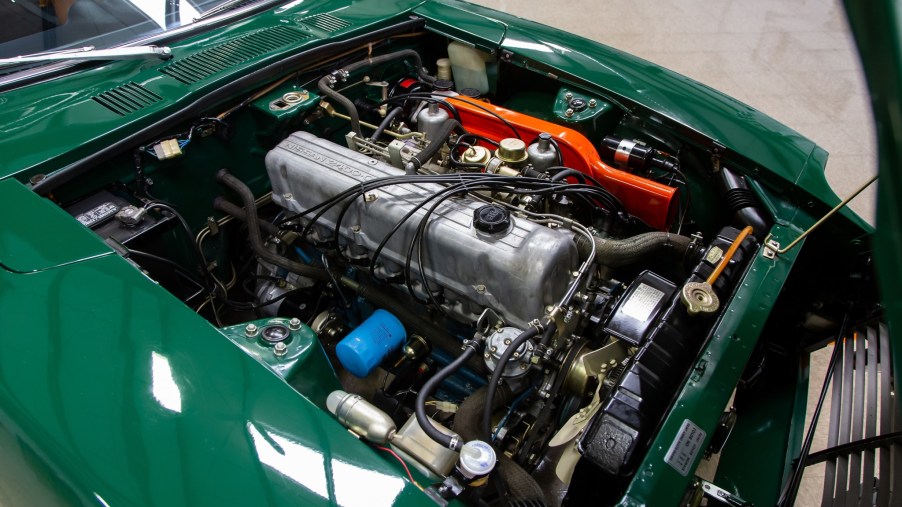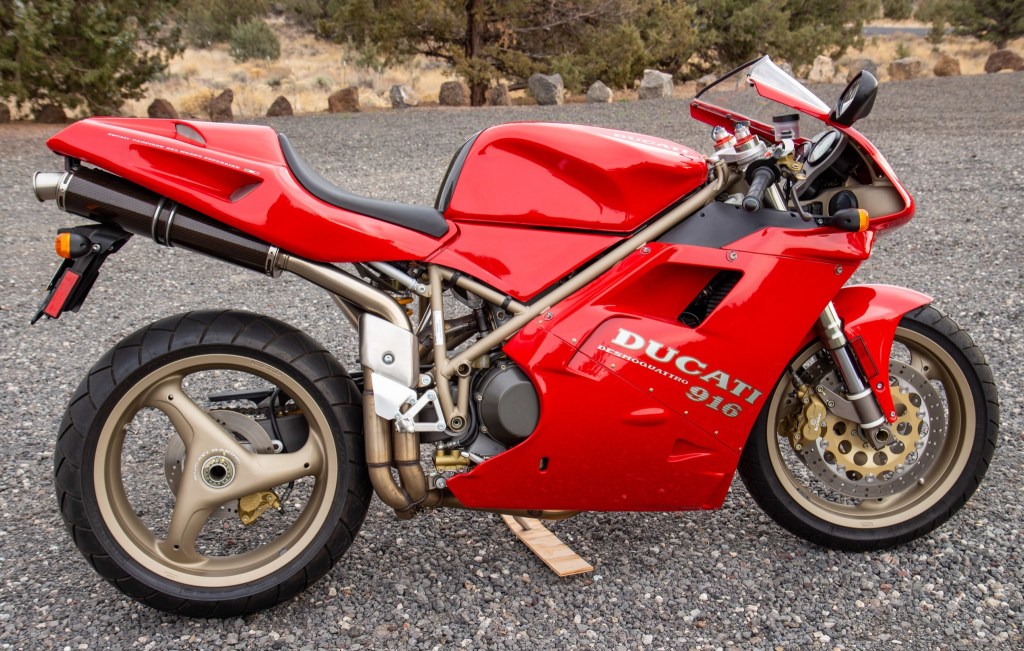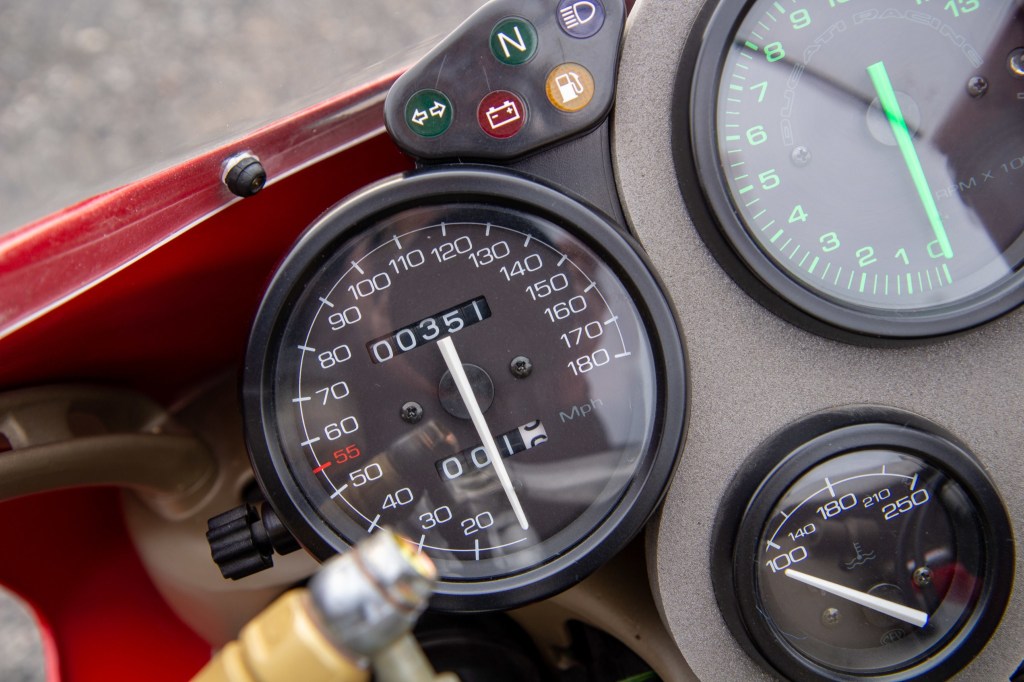
Why an Ultra-Low-Mileage Car Could Be a Maintenance Nightmare
Nowadays, it’s not unusual nowadays to see cars, trucks, and SUVs travel 200,000 miles or more. But, generally speaking, most used buyers look for low-mileage cars, which have seen less wear-and-tear on their components. This is especially true when looking at classic cars. That 1971 Datsun 240Z that recently sold for over $300,000 only had 21,000 miles on it. However, buying an older car with low miles isn’t necessarily the best decision.
A low-mileage car’s parts still degrade

As of this writing, Bring a Trailer is offering a 1997 Ducati 916S that only has 351 miles on the clock. The ad claims that the original owner drove it 350 miles, then kept it in their living room. The current seller, after acquiring it, only ran the engine occasionally and kept the bike on a trickle charger.

A bike as iconic as the 916, in basically showroom-condition, will undoubtedly attract some high bids. However, as of this writing, with 5 days to go, the highest bid is $10,995. And there’s a very good reason for that.
Cars and motorcycles, as Jalopnik and users on the r/askcarsales sub-Reddit, explain, don’t do well when they sit for a long time. Especially when it comes to rubber gaskets and seals, which dry out and need to be replaced. Kelley Blue Book reports older low-mileage cars can also develop tire dry rot, as well as have heater and radiator components fail. And having any motor vehicle sit on its tires for long also risks developing tire flat spots.
Then there’s the fluids. Cars.com reports that gasoline and oil can attract moisture over time, causing internal corrosion that can severely damage the engine, as well as fuel and oil lines. Other fluids, like antifreeze and transmission fluid, can also corrode or leak out over time, damaging other components, reports Only About Cars and the Mechanics Stack Exchange.
In short, even if a low-mileage car looks good on the outside, it could have a bunch of internal problems.
Should I buy a car with low miles?
Buying a low-mileage car or other vehicle isn’t necessarily a bad idea. As long as you take some necessary precautions.
Firstly, as is recommended with any used car purchase, get an independent inspection. Before buying the car or bike, take it to a trusted mechanic, preferably that works with the brand you’re buying, for a thorough look-over. They’ll be able to identify any potential issues, including age-related degradation. Then, if any major and/or expensive repairs need to be performed, you can decide if you want to walk away, or re-discuss the buying price.
Secondly, ask the seller about their driving habits. Even if the vehicle doesn’t have a lot of miles, if it was genuinely run on the road, instead of simply idling in place, that means the fluids kept circulating and the components saw regular use. However, as CarGurus explains, bear in mind that short-distance driving causes more wear than highway driving.
And a low-mileage car may be alright, as long as it was properly stored.
How to properly store a car long-term
First, as Edmunds explains, park the vehicle in a secure, weatherproof area. If that’s not possible, get a car cover—but don’t use it indoors, as that could trap moisture. Next, change the oil and oil filter, to remove any old debris and oil.
After that, fill the gas tank as much as possible, and add some fuel stabilizer. This, as Road & Track and The Drive, explain, keeps the ethanol and gasoline from separating. This prevents the ethanol from pulling water in from the atmosphere, and the gasoline from oxidizing and turning into gummy varnish. After adding the stabilizer, let the engine run for a few minutes, so the stabilized fuel works its way throughout the engine and fuel lines.
After that’s done, remove the spark plugs, and lubricate the plug sockets before replacing the plugs. This helps prevent corrosion of both the plugs and sockets.
Business Today advises not to set the parking brake, or the brake pads could stick to the rotors. Instead, use wheel chocks to hold the vehicle in place. You can also raise the vehicle on jacks, and remove the wheels entirely, which would also prevent tire flat spots.
Finally, there’s the car’s battery. This can go flat over time, and the terminals can also corrode. You can simply disconnect the negative terminal. However, to truly maintain a battery’s condition and charge, it’s best to purchase a trickle charger or battery tender/float charger. According to ItStillRuns, the former constantly feeds (‘trickles’) a small flow of charge to the battery. The latter, though, only turns on and recharges the battery if it falls below a certain level of charge. The former is cheaper, although it can overcharge the battery if not personally monitored.
Follow more updates from MotorBiscuit on our Facebook page.


